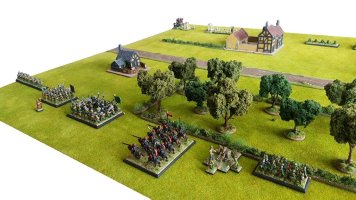The "trees" I am using will fit the rest of the fauna I did so far for the project, and also be some kind of weird alien plants - fungi to be precise. The idea for this kind of mushroom I got from
Michael's TWS YouTube video - using garlic bulb cores.
And it fits the 90's theme in my opinion, because my trees are not some kitbashed plastic kits, but actually self crafted, even incorporating nature.
In Michael's video, the cores had nice, thick stems. I got a few of them, but most of those I have are much more flimsy; I wouldn't trust them to be durable. Also, I would like to change the look of the stems.
That is why I mounted the floral wire on my bases. I drilled a hole in the core base, glued the wire into that hole with super glue, and, once dry, wrapped the wire around the stem; or in some cases I didn't even have a stem.
The next step was to apply a thin sheet of air drying clay around stem/wire and connect that with the clay already on the base, to give the "tree" some stability and fix the position of the stem. To get thin sheets of clay, I placed a clump of clay between two sheets of baking paper, and rolled them flat with a rolling pin (which I borrowed from our kitchen, don't tell my wife...).
Once that initial stabilizing layer was dry, I wrapped more thin sheets of clay around the stems, brought them into a form I liked, and then sculpted vertical grooves into them.
So I have been collecting garlic bulb cores for the last couple months, but we definitely don't eat enough. I am running low and currently only have enough for about half my bases. It looked like so much in the box...
Unfortunately nearby restaurants I asked all use industrially cut garlic, and don't process cloves out of bulbs themselves.
Now I need to go and eat some raw garlic so we have to buy some more...










